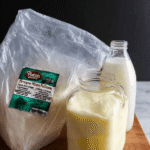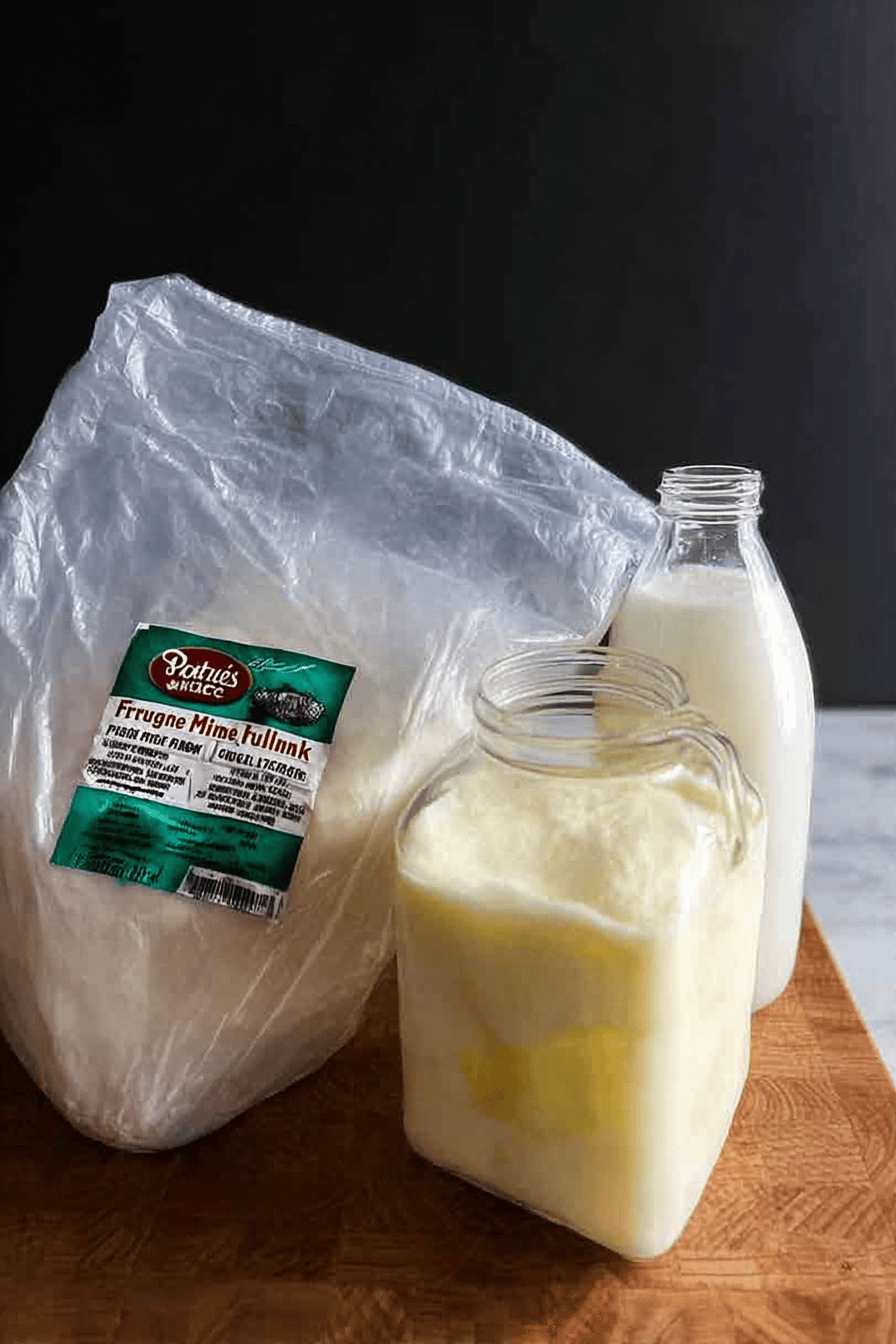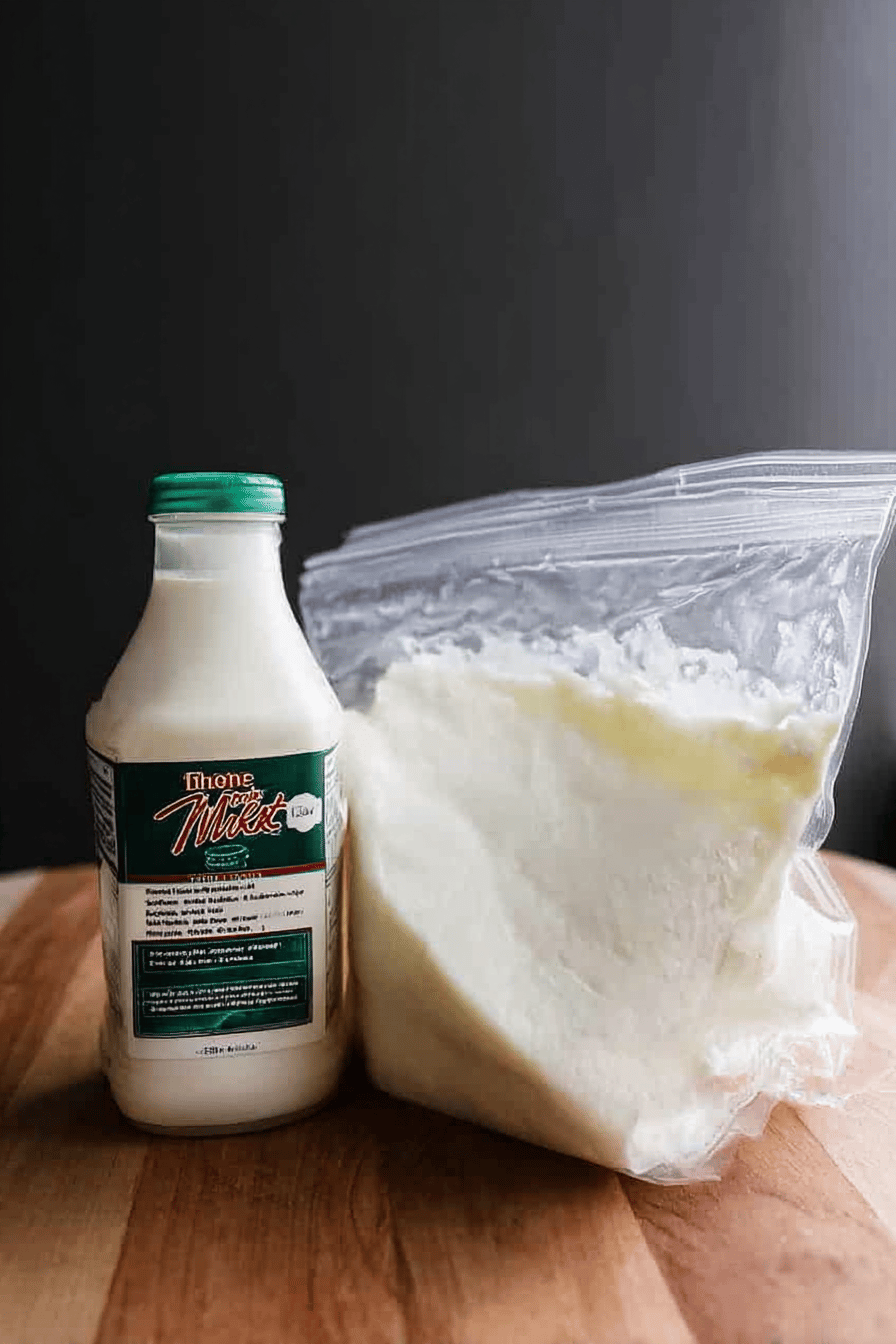Why You’ll Love This How To Freeze Buttermilk
If you’re diving into the kitchen like I often do, you’ll appreciate how freezing buttermilk keeps your ingredients ready without any fuss. This method is simple and quick, perfect for those days when life gets busy but you still want fresh tastes in your meals. Not only does it help save money by using up leftovers, but it also keeps that creamy texture for all your favorite recipes.
One reason this how to freeze buttermilk technique stands out is its ease of preparation. It requires just a few steps and items you likely have on hand, making it ideal for busy parents or working professionals. Plus, it offers health benefits by preserving the natural probiotics in buttermilk, which support digestion and overall wellness. This approach is versatile too, fitting into various diets while keeping that tangy flavor that makes dishes pop.
- Ease of preparation: This how to freeze buttermilk recipe is simple and quick, requiring minimal steps and common kitchen tools, making it perfect for busy individuals.
- Health benefits: Using frozen buttermilk preserves its probiotic qualities and nutrients, supporting digestion and overall wellness.
- Versatility: Adaptable for various dietary needs, this how to freeze buttermilk guide works well with vegan, gluten-free, and low-calorie diets.
- Distinctive flavor: Freezing buttermilk retains its tangy, rich flavor that enhances countless recipes, making your dishes stand out naturally.
As someone who loves whipping up quick breakfast bakes, I find that frozen buttermilk adds a special touch without extra effort.
Jump To
- 1. Why You’ll Love This How To Freeze Buttermilk
- 2. Essential Ingredients for How To Freeze Buttermilk
- 3. How to Prepare the Perfect How To Freeze Buttermilk: Step-by-Step Guide
- 4. Dietary Substitutions to Customize Your How To Freeze Buttermilk
- 5. Mastering How To Freeze Buttermilk: Advanced Tips and Variations
- 6. How to Store How To Freeze Buttermilk: Best Practices
- 7. FAQs: Frequently Asked Questions About How To Freeze Buttermilk
- 8. How To Freeze Buttermilk
Essential Ingredients for How To Freeze Buttermilk
When it comes to how to freeze buttermilk, starting with the right ingredients makes all the difference. I always keep things straightforward in my kitchen, and this list helps ensure you have exactly what you need for success. Let’s break it down so it’s easy to follow and get you freezing in no time.
Main Ingredients
- 1 cup fresh buttermilk – Provides the base with natural probiotics and creamy texture.
- 1 airtight freezer-safe container – Ensures freshness and prevents freezer burn.
- 1 tablespoon optional thickener (cornstarch) – Helps maintain consistency after thawing.
Special Dietary Options
- Vegan: Use plant-based fermented milk like coconut or almond buttermilk alternatives.
- Gluten-free: Naturally gluten-free but ensure any added ingredients meet gluten-free standards.
- Low-calorie: Use low-fat or skim buttermilk varieties for lighter options.
This structured list covers everything mentioned, so you can measure out each item precisely for your freezing session. For instance, that 1 cup of fresh buttermilk is key for the base, and don’t forget the airtight container to keep things fresh.
How to Prepare the Perfect How To Freeze Buttermilk: Step-by-Step Guide
Getting started with how to freeze buttermilk is easier than you might think, especially if you have leftovers sitting in your fridge. I remember the first time I tried this; it saved me from wasting that extra bit from my last baking project. To make it simple, we’ll go through each step, including portioning into labeled freezer bags as a smart way to handle unused portions.
Prepare and Portion Your Buttermilk
First, take your fresh buttermilk and shake the container gently for an even texture. Then, portion it into labeled freezer bags based on common recipe measurements, like 3/4 cup per bag, to make it ready for future use. This method helps avoid waste and ensures you have just the right amount when you need it.
Freezing Process
Next, prepare a flat surface such as a cookie sheet in the freezer. Press out excess air from the bags, seal them tightly, and lay them flat to freeze quickly and evenly. Once frozen, you can stack the bags to save space in your freezer, making this how to freeze buttermilk technique both efficient and practical.
- First Step: Prepare fresh buttermilk by shaking the container gently to ensure even texture.
- Second Step: Pour the buttermilk into a clean airtight freezer-safe container or bag, leaving some headspace for expansion.
- Third Step: Optional mix in 1 tablespoon cornstarch if a thicker consistency is preferred after thawing.
- Fourth Step: Seal the container tightly and label with date and contents, including the amount and description, for easy identification.
- Fifth Step: Place the container or bags in the coldest part of the freezer to freeze quickly.
- Sixth Step: For thawing, place the frozen buttermilk bag in the refrigerator overnight or submerge it in lukewarm water for about 20 minutes, changing the water as needed.
- Final Step: Shake or stir the thawed buttermilk before using to restore texture, and remember, though some separation may occur, it’s still great for baking.
These steps incorporate the flat freezing technique, which speeds up thawing and keeps your buttermilk fresh. For more ideas on using thawed buttermilk, check out this delicious pecan bread recipe that works wonders with it.
Dietary Substitutions to Customize Your How To Freeze Buttermilk
Making how to freeze buttermilk work for your needs is all about tweaks that fit your lifestyle, just like I do when experimenting in the kitchen. Whether you’re aiming for a vegan twist or something lighter, these swaps keep things tasty and adaptable. Let’s look at how to adjust based on what you have on hand.
Protein and Main Component Alternatives
- Use plant-based fermented milk such as soy or oat-based buttermilk alternatives to suit vegan diets.
- Swap in coconut or almond-based cultured beverages to mimic buttermilk’s tang for dairy-free options.
Vegetable, Sauce, and Seasoning Modifications
- Swap in seasonal vegetables to complement dishes using frozen buttermilk.
- Use gluten-free sauces and seasoning blends to maintain dietary compliance.
- Adjust herbs and spices to cater to flavor preferences or nutritional needs, while keeping the signature tang from buttermilk.
For example, if you’re like me and often cook for a mixed group, adding these changes makes your frozen buttermilk versatile for everyone at the table.
Mastering How To Freeze Buttermilk: Advanced Tips and Variations
Once you get the basics of how to freeze buttermilk down, it’s fun to level up with some pro tips that I’ve picked up over time. These ideas can turn a simple freezer trick into something more creative, like adding flavors that surprise your taste buds. Let’s explore ways to make this process even better for your kitchen routine.
| Technique | Benefit |
|---|---|
| Freeze quickly in ice cube trays | Allows for easy thawing and precise measurements in recipes |
| Add natural infusions like vanilla | Customizes taste for unique flavor profiles |
| Use as a garnish | Enhances appearance and flavor in dishes |
- Pro cooking techniques: Freeze buttermilk quickly in portioned ice cube trays to enable easy thawing and precise use in recipes.
- Flavor variations: Add natural flavor infusions before freezing, such as vanilla or citrus zest, to customize taste.
- Presentation tips: Use freshly thawed buttermilk as a garnish ingredient for salads or baked goods to enhance appearance and flavor.
- Make-ahead options: Pre-portion and freeze in single-serving containers to streamline meal prep and reduce waste.
These tips help enrich the texture and convenience, building on the basic how to freeze buttermilk method I shared earlier.
How to Store How To Freeze Buttermilk: Best Practices
Storing your frozen buttermilk the right way keeps it fresh and ready, which is something I always emphasize in my kitchen adventures. After all, no one wants to deal with freezer burn when you’re in the middle of cooking. Let’s cover the key practices, including how to use those labeled bags for optimal results.
To freeze buttermilk, use leftover or unused portions and portion them into labeled freezer bags according to common recipe measurements, such as 3/4 cup per bag. This method helps avoid waste and speeds up thawing due to the flat freezing technique.
Before freezing, store fresh buttermilk in the fridge for up to 1 week, always sealed tightly. For freezing, use airtight containers or bags, removing excess air to prevent issues and keep quality for up to 3 months. When it’s time to use it, thaw in the refrigerator and avoid direct microwaving to maintain texture.
- Refrigeration: Store fresh buttermilk in the fridge for up to 1 week before freezing, always tightly sealed.
- Freezing: Use airtight containers or freezer bags, removing excess air to preserve quality for up to 3 months.
- Reheating: Thaw in the refrigerator and use cold or at room temperature in recipes.
- Meal prep considerations: Portion buttermilk before freezing to simplify cooking and cut down on thawing time.
Clearly labeling each bag with the amount, description, and date makes tracking easy, just as I do for my own freezer stock.

FAQs: Frequently Asked Questions About How To Freeze Buttermilk
Can you freeze buttermilk and use it later for cooking or baking?
Yes, you can freeze buttermilk and still use it for cooking or baking later. Freezing may cause some separation or thickening, but once thawed, giving it a good stir will restore most of its original texture. It’s best to freeze buttermilk in airtight containers, leaving space at the top for expansion. Frozen buttermilk works well in recipes like pancakes, biscuits, and cakes where its acidity helps with leavening.
How should I store buttermilk before freezing to keep it fresh?
Before freezing, keep buttermilk in its original container or transfer it to a clean, freezer-safe airtight container. Make sure to leave about an inch of space at the top to allow for expansion as it freezes. Label the container with the freezing date, and use the buttermilk within 3 months for the best quality. Avoid freezing buttermilk in glass containers as they can crack.
How do I thaw frozen buttermilk safely and make it usable again?
Thaw frozen buttermilk by placing it in the refrigerator overnight. Avoid thawing at room temperature to reduce the risk of spoilage. Once thawed, stir or shake the buttermilk well to recombine any separated liquid and solids. If it appears too thick, you can whisk in a tablespoon of water or milk to restore its original consistency before using.
Will freezing buttermilk affect its taste or nutritional value?
Freezing buttermilk may cause minor texture changes, but its taste and nutritional value generally remain intact when properly frozen. The acidity and flavor that buttermilk contributes to recipes are mostly preserved. However, once thawed, it’s best to use it in cooked or baked dishes rather than drinking it straight, as freezing can alter the mouthfeel.
Can I freeze homemade buttermilk or only store-bought buttermilk?
Both homemade and store-bought buttermilk can be frozen successfully. Homemade buttermilk, made by adding acid (like lemon juice or vinegar) to milk, freezes the same way as commercial buttermilk. Ensure your homemade batch is fresh before freezing and follow the same storage tips. After thawing, use it primarily in recipes rather than as a beverage to maintain the best results.

How To Freeze Buttermilk
Description
🥶 Freezing buttermilk using proper portioning and flat freezing techniques helps maintain freshness and prevents waste.
🧊 Thawing buttermilk effectively preserves its baking qualities, making it easy to use straight from the freezer.
Ingredients
– 1 cup fresh buttermilk Provides the base with natural probiotics and creamy texture
– 1 tablespoon optional thickener (cornstarch) Helps maintain consistency after thawing
Instructions
First Step: Prepare fresh buttermilk by shaking the container gently to ensure even texture.
Second Step: Pour the buttermilk into a clean airtight freezer-safe container or bag, leaving some headspace for expansion.
Third Step: Optional mix in 1 tablespoon cornstarch if a thicker consistency is preferred after thawing.
Fourth Step: Seal the container tightly and label with date and contents, including the amount and description, for easy identification.
Fifth Step: Place the container or bags in the coldest part of the freezer to freeze quickly.
Sixth Step: For thawing, place the frozen buttermilk bag in the refrigerator overnight or submerge it in lukewarm water for about 20 minutes, changing the water as needed.
Final Step: Shake or stir the thawed buttermilk before using to restore texture, and remember, though some separation may occur, it’s still great for baking.
Notes
🧊 Use flat freezing to speed up freezing and thawing times.
📝 Label bags with amount, description, and freezing date for easy tracking.
🍰 Separation after thawing is normal; simply mix before using in baking.
- Category: Storage Tips
- Method: Freezing and thawing
- Cuisine: Universal
Keywords: Buttermilk, Freezing, Storage, Thawing


